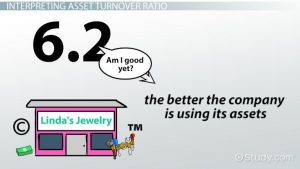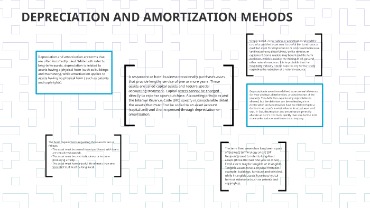Backstage & Influences

You may need to delete deposits in QuickBooks Online when correcting errors, updating records, or resolving discrepancies in your financial statements. This guide provides advance to employee definition and that means a detailed, step-by-step process to help you delete deposits efficiently. We also introduced an alternative method, voiding deposits, which allows you to maintain a record of the transaction while signifying that it is no longer valid.
Within the selected deposit entry, locate and click on the “Edit” option followed by the “Undo Deposit” function to initiate the reversal of the specific deposit transaction within the QuickBooks software. To begin, access the deposit entry and carefully review each payment listed. Once you’ve confirmed the differences between managerial and financial accounting the payment to be deleted, proceed with caution as deletions are irreversible. Identify and select the specific deposit that requires deletion from the list of recorded transactions displayed within the Banking Tab of QuickBooks Online, ensuring accuracy in the selection process. To begin the process of deleting a deposit in QuickBooks Desktop, navigate to the Deposit Window within the software to access the list of recorded deposits and related transactions. In this article, we will guide you through the process of deleting deposits in QuickBooks and help you avoid potential accounting mistakes.
How To Set Up ACH Payment In Quickbooks
Let’s dive in and learn how to effectively delete a deposit in QuickBooks. You’ll normally get an alert when modifying a deposit that’s already linked to your bank or invoice. To correct this, we’ll need to undeposit the transaction first before editing or deleting it. Once the ‘Edit’ option is clicked, a window will appear allowing you to make necessary changes to the deposit entry.
This method can be helpful in situations where you need to keep an audit trail or reverse a deposit due to changes in circumstances. Instead of following Jen_D’s steps, you can simply delete the deposit transaction by clicking More at the bottom and selecting Delete. Remember that voiding a deposit should be done with caution as it will impact the financial records.

How To Clear Undeposited Funds In Quickbooks Online
In QuickBooks, deposits are recorded as transactions that represent funds received by your business. These funds can come from various sources, such as customer payments, bank transfers, or credit card settlements. Deleting a deposit in QuickBooks Desktop involves several simple steps to ensure accurate financial records and transaction management. Follow the outlined steps to effectively delete a deposit within the QuickBooks Desktop interface. Deposits play a crucial role in accurately tracking your business’s cash flow and ensuring that your financial records match the actual funds you have received. When you create a deposit in QuickBooks, it consolidates the answers about cancelled checks individual payments and transfers into a single transaction, simplifying the process of reconciling your bank accounts.
Within the selected payment entry, locate and click on the ‘Edit’ option followed by the ‘Delete Line’ function to initiate the deletion of the specific payment within the deposit in QuickBooks. This confirmation step is crucial as it acts as a safeguard against accidental or unintended deletions. Verifying the deletion action helps to mitigate errors and ensures that only the intended transactions are permanently removed. Once confirmed, the deletion becomes irreversible, highlighting the importance of attentiveness during this step. QuickBooks Desktop provides a user-friendly interface with clear navigation steps, making the process of editing or deleting deposits straightforward for users.
- Click on the deposit to select it, then locate the ‘Edit’ option to make changes to the deposit.
- SaasAnt allows for bulk operations, reducing manual errors and saving time.
- Click “Delete Line” to remove the line from your “Make Deposits” window and your account register.
- Deleting a deposit in QuickBooks Online requires specific actions within the online platform to ensure accurate transaction management and financial records.
- Press “Save & Close” to save the transaction and close the “Make Deposits” window.
How to Watch Movies With Friends Online Easily for Free
Once a deposit is deleted, it cannot be undone, so exercise caution while proceeding with this action. After completing the delete process, make sure to review your remaining deposits to ensure that your financial records accurately reflect the changes made. After initiating the deletion process, QuickBooks Desktop will prompt a confirmation dialogue to ensure the intentional deletion of the selected deposit. While deleting a deposit is a suitable option for removing an erroneous or unnecessary transaction, there may be cases where voiding a deposit is a more appropriate solution. Voiding a deposit allows you to maintain a record of the transaction while indicating that it is no longer valid. This method can be useful if you want to keep a trace of the deposit for auditing purposes or if you need to reverse a deposit due to changes in circumstances.
Once the confirmation for the undo action is completed, the deposit entry will be updated accordingly, reflecting the reversed status within QuickBooks. QuickBooks Desktop provides an ‘undo’ or ‘void’ feature for a limited time after the deletion, allowing users to rectify any mistaken deletions. Therefore, it is essential to double-check and confirm the action before proceeding. Click “Delete Line” to remove the line from your “Make Deposits” window and your account register. Press “Save & Close” to save the transaction and close the “Make Deposits” window.
How to Undo a Deposit in QuickBooks?
You have a search bar or filters such as transaction type, Data Type, and Date Range. Suppose you remember the transaction type or the date; enter these details, and the system will pull up matching records. If you already went through them and the issue persists, then I suggest you contact our Technical Support team for further assistance. They have the tools to remotely access your computer, with your permission, and investigate as to why you’re unable to delete a deposit transaction. In Quick books online, I am trying to delete a deposit in the « undeposited funds » register. I keep getting the message « This transaction has been deposited. If you want to change or delete it, you must edit the deposit it appears on and remove it first. »
-
Search